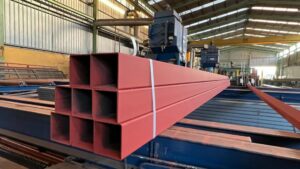
Voestalpine has come up with a manufacturing process to produce lighter weight rail cars, able to carry up to 4 mt more load as a result reducing environmental impact from freighting, the company said Aug. 19.
The Austrian steel and technology group said it has transferred a process for making ultra-high tensile auto parts to railway systems.
In cooperation with the Rail Cargo Group, the cargo subsidiary of the Austrian Railways (OBB), Voestalpine’s steel division and logistics subsidiary, Logserv, has developed TransANT, a design concept for manufacturing freight cars with lightweight modular superstructures.
Voestalpine has already started to supply a complete system for new lightweight freight cars, encompassing high-performance steels and a particular welding technology, which both contribute to the cars’ lower weight and greater performance.
Weight reductions are achieved through the use of stiff, ultra-high tensile section solutions.
“The undercarriage, which is about 20% lighter than conventional models, makes it possible to add loads of up to four tons per freight car,” the company said.
The steelmaker said this is the first time so-called topology optimization is being applied in the construction of freight cars. The technology, which so far has been used in automotive and aerospace construction, involves a software algorithm that works out a particular design proposal based on predetermined parameters yielding a structure that combines minimum weight with maximum tensile strength.
Logserv is already using the first batch of freight cars to carry iron ore, Voestalpine said, adding that the cars’ new design and the additional weight they accommodate should reduce the number of train trips for the subsidiary by about 100/year.
— Ekaterina Bouckley




